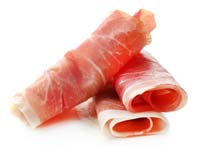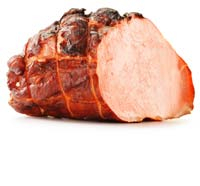Case study no.3
Ready-to-eat meat
Consumers expect ready-to-eat meat not only to be safe but also to have fresh, just-prepared appearance and this is the most natural way possible. HPP not only reaches these expectations, but also allows increased distribution of ready-to-eat meat to a larger territory.
By reducing the level of harmful pathogens as well as minimising enzymatic activity, ready-to-eat meats retain the sensory qualities, texture, color and nutritional content while increasing 3 times the product’s shelf life.
HPP technology is a post-packaging process, which adds food safety assurance to treated products.

HPP quality extension
in RTE meats
X: Shelf-life (weeks) Y: Quality index / Data source: Avure Technologies Inc., Kent, WA USA

Effects of HPP on
L. monocytogenes in RTE meats
X: Storage (days)
Y: Log CFU/g
Data source: Avure Technologies Inc., Kent, WA USA

HPP shelf-life extension
ham
X: Storage (days)
Y: Log CFU/g
Data source: Avure Technologies Inc., Kent, WA USA


